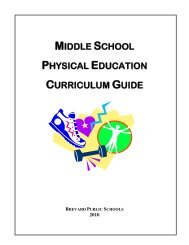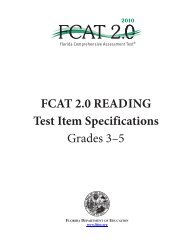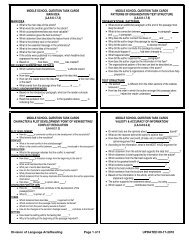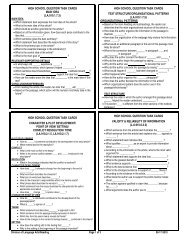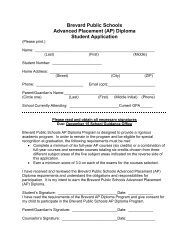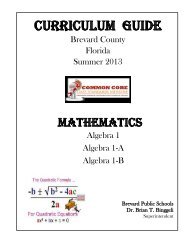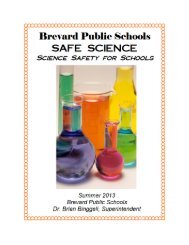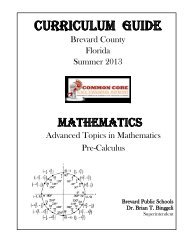Science Research Program Guide - Secondary Programs Home ...
Science Research Program Guide - Secondary Programs Home ...
Science Research Program Guide - Secondary Programs Home ...
Create successful ePaper yourself
Turn your PDF publications into a flip-book with our unique Google optimized e-Paper software.
Writing a <strong>Research</strong> Paper<br />
A research paper is a required part of a <strong>Science</strong> Project. This is in addition to the items<br />
that are placed on the backboard. It is the parts of the project compiled into one document and<br />
placed in a binder.<br />
Your scientific paper will contain at least 11 sections IN THIS ORDER:<br />
• Title Page<br />
• Abstract<br />
• Problem or Purpose<br />
• Hypothesis<br />
• Materials<br />
• Procedure<br />
83<br />
• Background<br />
• Results<br />
• Conclusions<br />
• Bibliography<br />
• Future Studies<br />
THE TITLE is the beginning. You have already picked a good title for your project. Use the<br />
same one for your paper. Center the title near the middle of the page.<br />
THE ABSTRACT is an overview. As strange as it might seem, the first part of your paper is the<br />
part you write last. Your abstract is one page. It contains clear, brief statements that summarize:<br />
(a) the problem or questions you are studying<br />
(b) the hypothesis<br />
(c) the action that you took in your investigation<br />
(d) the results of your experiments<br />
(e) your most important conclusions based on the results of YOUR work.<br />
THE PROBLEM or PURPOSE is the description of what you are attempting to solve with the<br />
project.<br />
THE HYPOTHESIS is a statement of an idea, based on research, that can be tested. It is what the<br />
investigator intends to support or disprove. It needs to be clearly and briefly stated (no more than<br />
2 complete sentences). The title, problem and hypothesis must be well correlated.<br />
THE PROCEDURE tells you what to do. It needs to be step by step (cookbook style) the<br />
experimental procedure gives all the details of how the experiment was conducted. It is so precise<br />
that someone could repeat your work without additional communication with you! Apparatus<br />
constructed should be photographed and discussed. Sketches and diagrams are very useful.<br />
Answer questions that apply to your project, such as:<br />
• What was measured and how?<br />
• For which variables were data collected?<br />
• How was your control experiment run?<br />
• What chemicals, plants, or animals were used?<br />
• How or where were your supplies mixed, made, or grown?<br />
• What equipment was used or built?<br />
If laboratory equipment is used, it should be described, its function discussed, and<br />
manufacturer and model number given.



